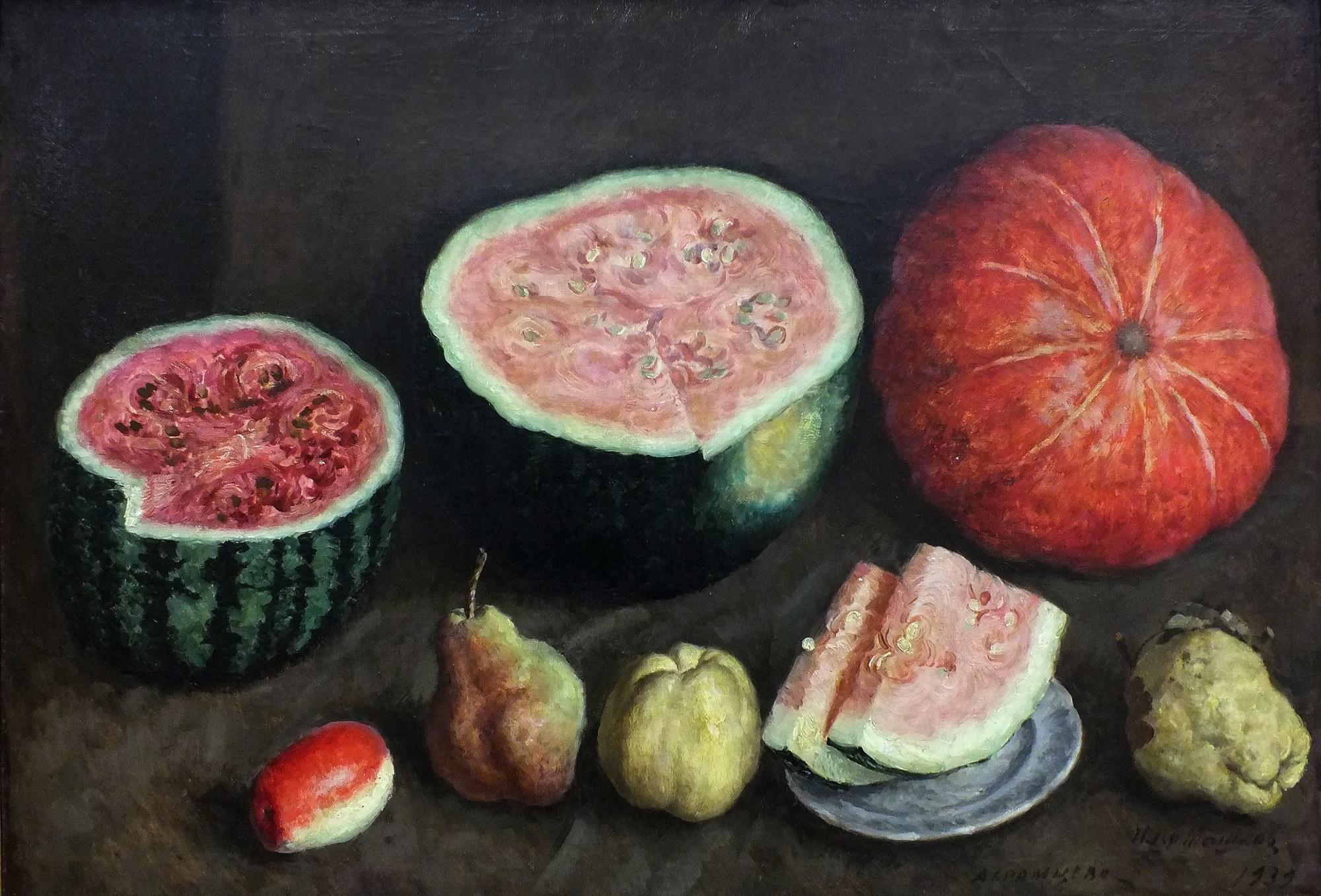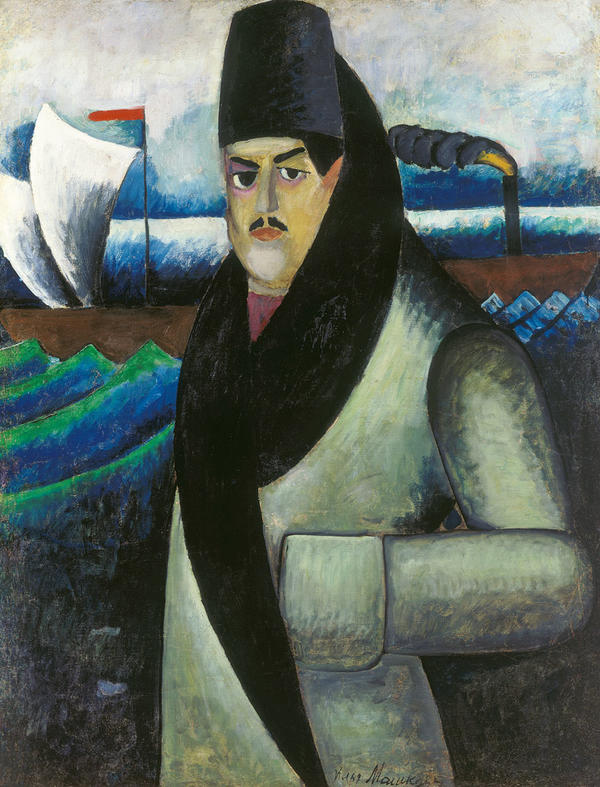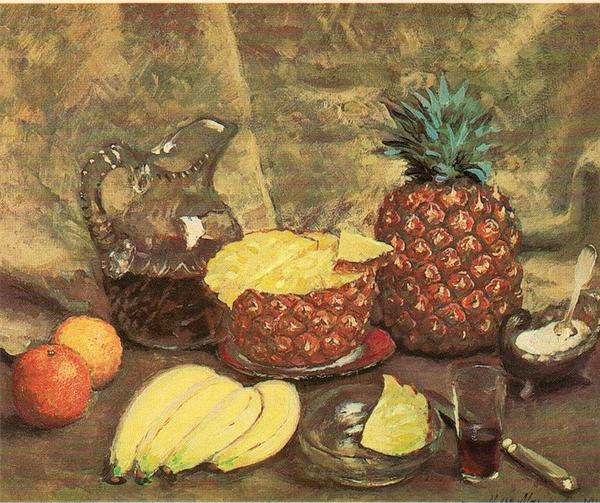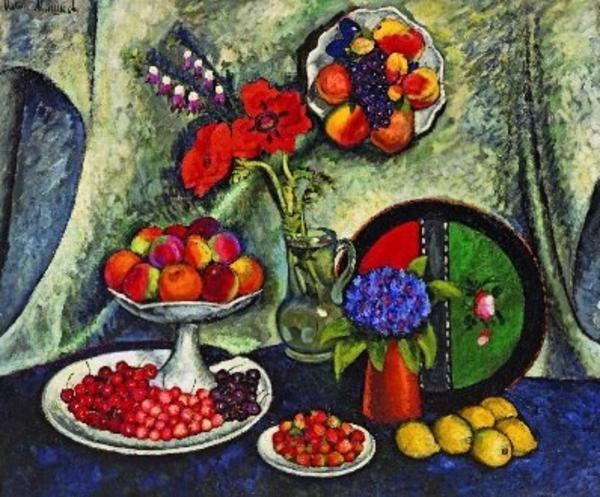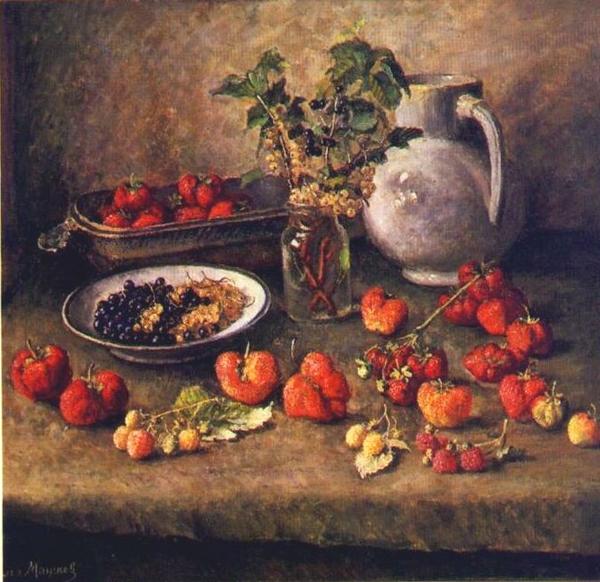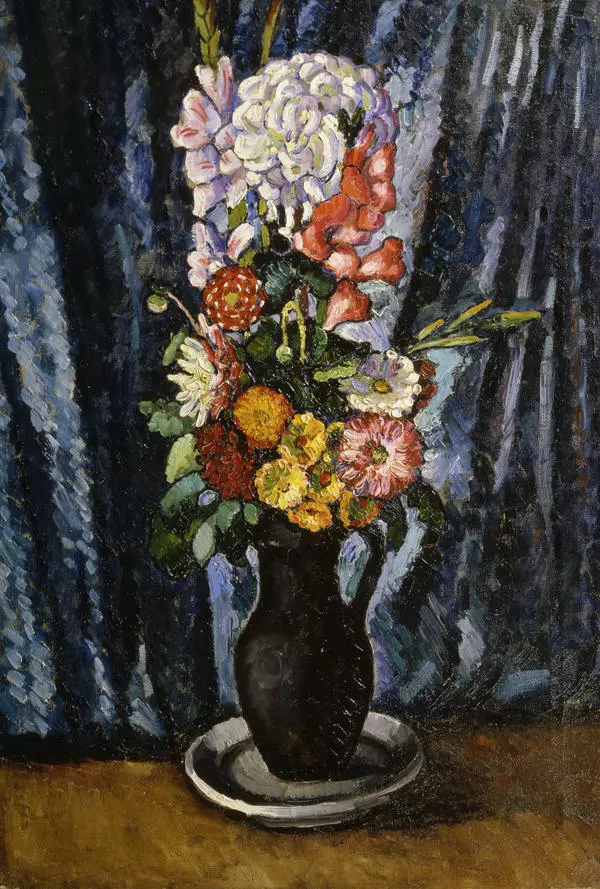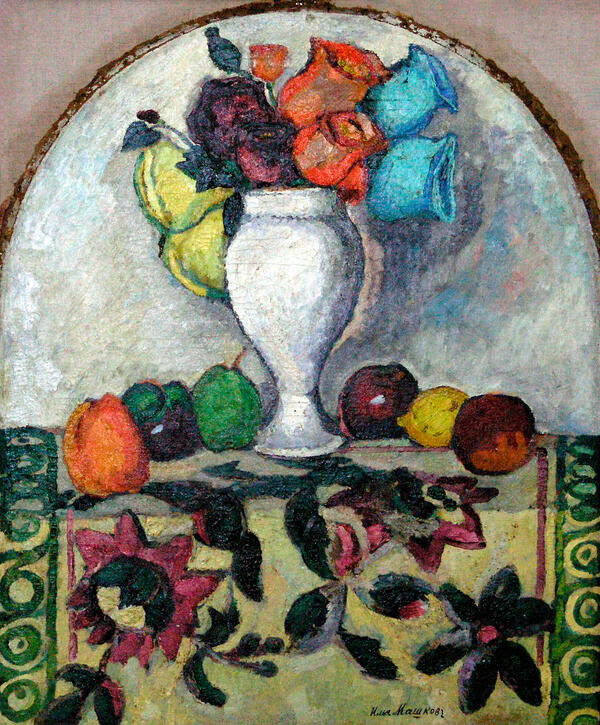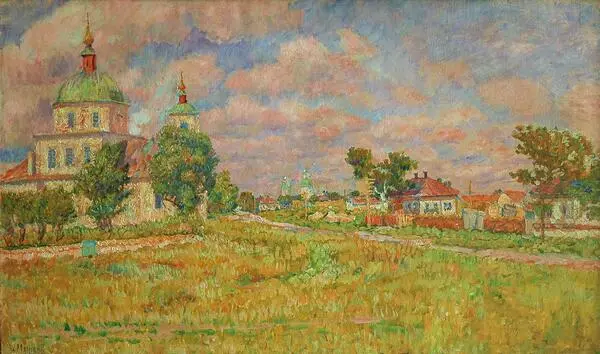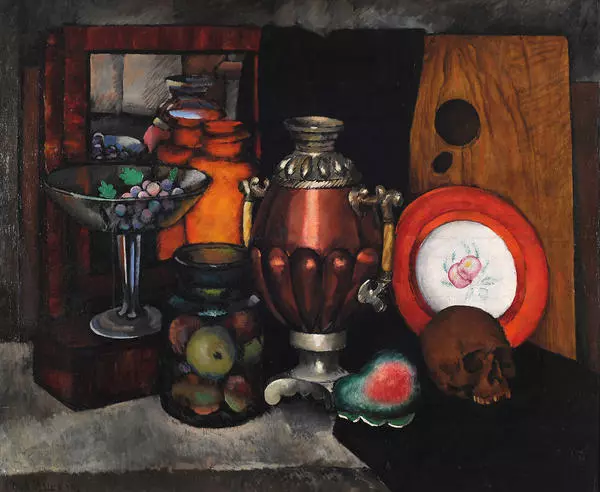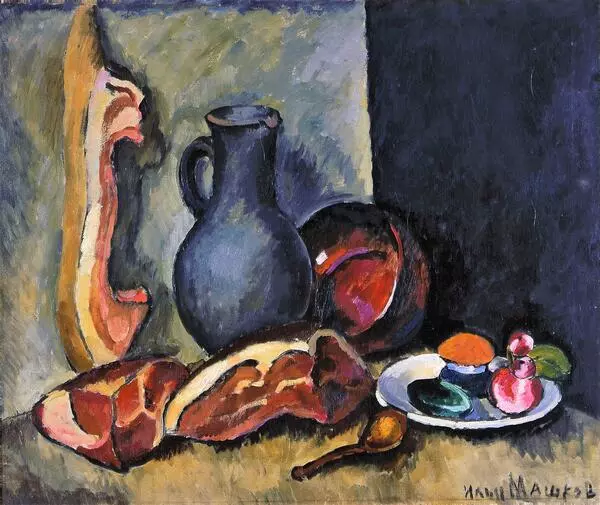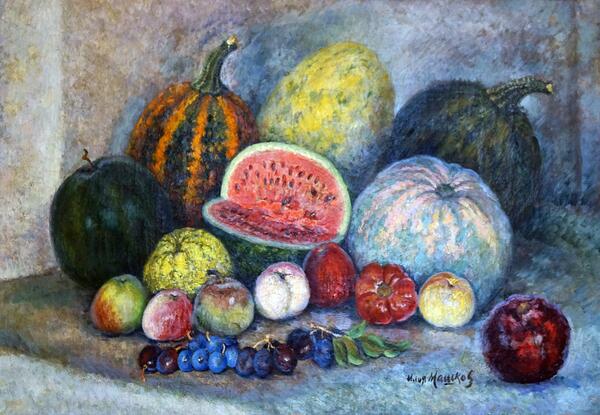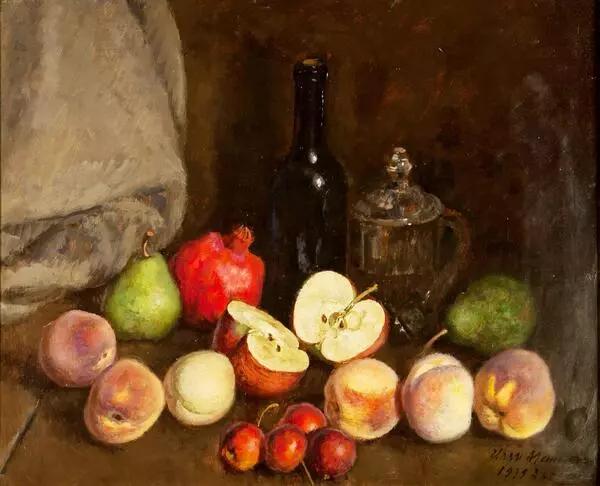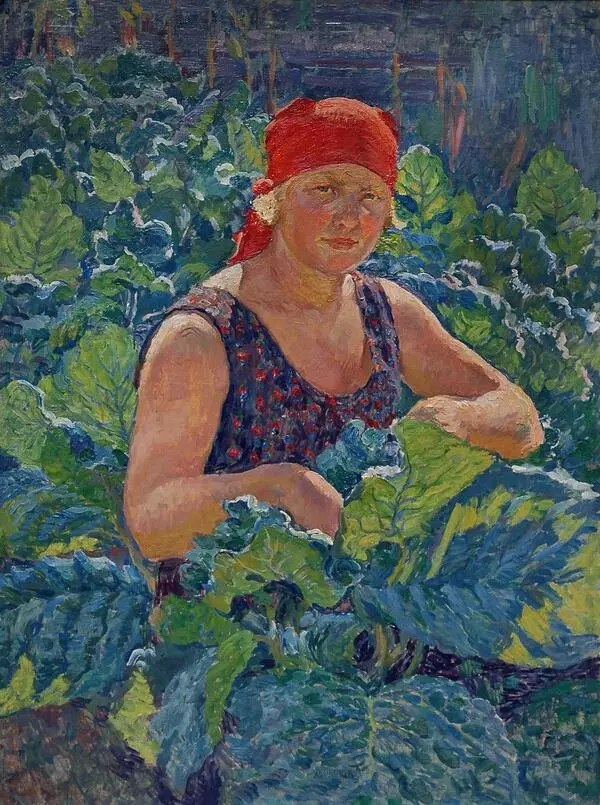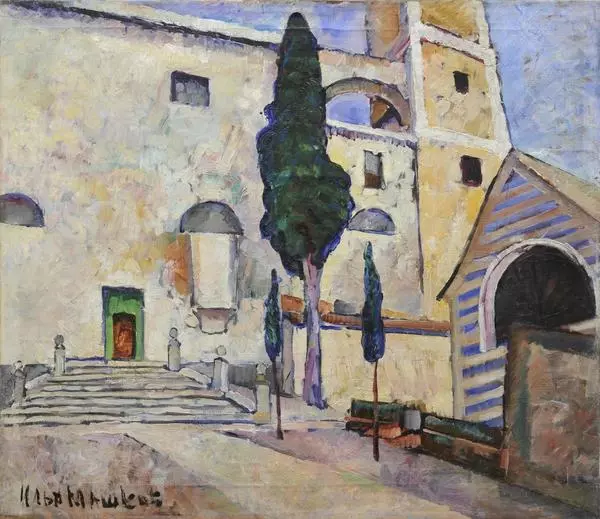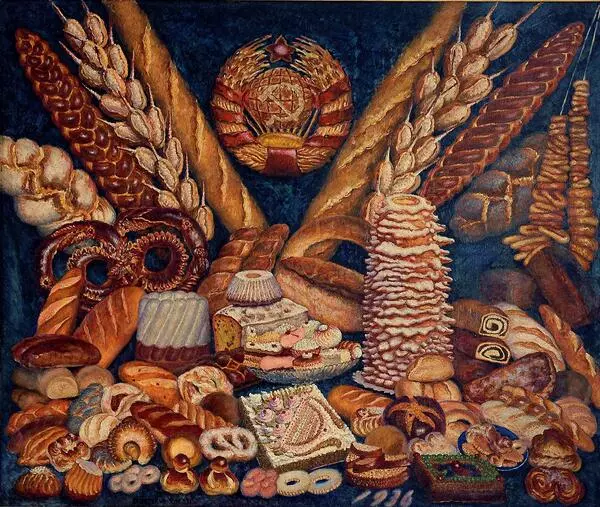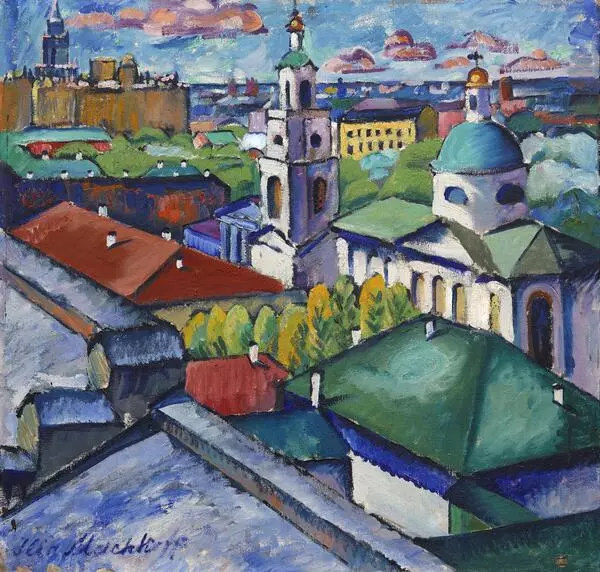Ilya Mashkov earned a nickname of ‘the king of still-life’ because this genre largely dominated his works.
The work Cut Watermelons, presented in the Bryansk Regional Museum of Art, belongs to the late period of the artist’s work. Researchers call it “the Abramtsevo period” after the name of the estate of the writer Sergei Aksakov, where Mashkov lived on and off for long periods of time since the spring of 1938. Abramtsevo became a hub of inspiration and creativity for many artists, poets, writers and musicians of the time, who dwelled in the settlement. Notably, the work presented in the museum was painted in Abramtsevo.
Mashkov’s still-lifes were never orthodox. The famous Soviet art historian Gleb Pospelov, described Mashkov’s style as “unrestrained “riot"’ of the brush, the power of color and greed for paint.
Mashkov’s colour preferences were not immediately accepted in the artistic world. For example, the artist’s creative aspirations were not supported by his teacher at the Moscow School of Painting, Sculpture and Architecture Valentin Serov. The following well-known incident is illustrative of that. As a student of art, Mashkov painted a model in blue-green tones, aiming to experiment with color. When his teacher, the honored master, saw the work, he could not help but saying: “This is not painting, but a lantern”. Eventually, the artist was expelled from the school.
